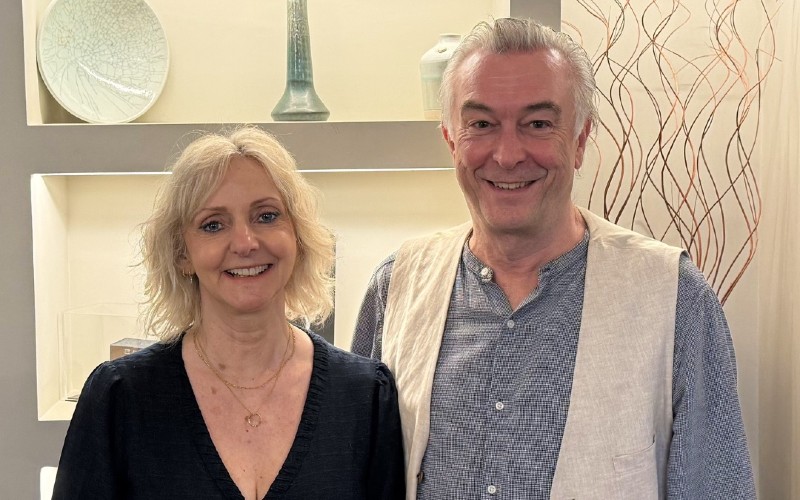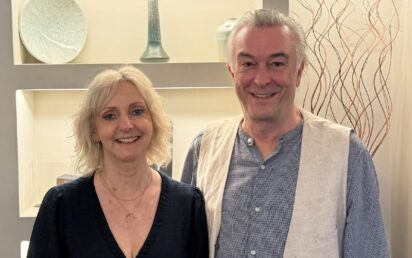In a world where it seems that software developers build educational platforms, you rarely see that flipped on its head.
However, that is exactly what Helen and Steve Edwards did when they launched Tapestry in 2012.
The duo were looking for a way to make life a little easier for nursery staff and for parents desperate to see what their children got up to each day.
Back then, Helen was running a nursery attached to the couple’s home. “We used to make special books for every child – photos, cut-outs, notes – lovely, but time-consuming and expensive,” she recalled.
“One night, Steve said, ‘Surely we can do this online now with iPads and cameras.’ And that’s when Tapestry was born.”
Today, the platform – created under the umbrella of Steve’s company, The Foundation Stage Forum – is used in around 14,000 schools and nurseries across the world, with roughly 95% in the UK.
It allows teachers and nursery staff to record, share and track a child’s learning journey, while giving parents a window into their child’s day.
A family business with roots in education
Former primary teacher Helen brought the classroom experience.
Steve, who had already built the online educator community EYFS.info, provided the technical know-how.
Steve explained to BusinessCloud: “I started off writing the website for Tapestry’s predecessor back in 2003.
“I’m not the real techie now – we’ve got ten developers in the building who are much better and much younger than me – but I still look after the technology side of things.”
From nurseries and childminders to reception and now primary schools, the company has evolved into a full learning platform covering children from birth to age 11.
“It started with preschools, but reception teachers quickly thought, ‘Why can’t we use it too?’” Helen explained.
“Now, children can have one continuous digital journal from their first nursery day to the end of year 6.”
Connecting parents and classrooms
That home-school connection remains at the heart of the platform.
“There’s so much evidence showing children develop better when parents and educators work together,” said Helen.
“Before Tapestry, parents had a 30-second chat at the nursery gate.
“Now they can see photos, videos, and comments in real time, and respond with their own updates from home.”
Steve added: “One of the most common stories we hear is that when parents ask, ‘What did you do today?’ and the child says, ‘Nothing,’ they can pull out their phone and show a photo of them happily painting or playing with friends. Suddenly, that opens up a real conversation.”
Growth through word of mouth and the pandemic
Tapestry, which ranked 3rd on BusinessCloud’s most recent EdTech 50 ranking, saw its expansion through primary education accelerated by Covid-19.
Steve said: “When schools closed, teachers realised Tapestry was already doing a great job in reception — so why not use it further up the school?
“We added features for Key Stage 1 and 2, like child logins so older pupils could add their own observations.”
“On one day during the second lockdown, we had a quarter of a million videos uploaded.
“Our servers almost melted. We were working at full speed and it felt like we’d become an emergency service for teachers!”
Built for educators, not investors
Unlike many of its venture-backed rivals, Tapestry has never taken external funding.
When launching, the couple took out an extra mortgage so Steve could work on the site for a year.
The business has been bootstrapped ever since, maintaining its mission of being affordable for nurseries whilst being profitable.
“We get approached all the time by investors,” Steve said.
“But we like being able to decide how fast we grow, how we innovate and how we look after our team.”
Constantly evolving
After more than a decade in business, the co-founders are anything but complacent.
A full design overhaul with Bristol-based Spinning Fox has modernised Tapestry’s look and feel – a move that’s already earned the platform a design award in London.
Steve explained: “We completely rebuilt the navigation, improved responsiveness and unified our web and mobile apps using React.
“Now we can roll out new features across all platforms simultaneously.”
Future plans include integrated payments, management information system (MIS) integration and AI-powered support tools.
“We’re developing AI expertise in-house,” he said.
“It’ll help with product support and customer services, and eventually in how the platform itself helps educators.”
Staying true to their roots
Despite their success, the couple have kept Tapestry grounded in its original values.
“We’ve got about 3,000 feature requests from users, and we prioritise the ones that matter most to schools,” said Helen.
“Eight of us here are ex-teachers, so we’re still very connected to what educators actually need.”
Staff retention is another point of pride.
“We hardly ever lose people,” she continued. “If someone wants to move from product support into marketing or design, we’ll support that.
“We’d rather keep good people and help them grow.”


